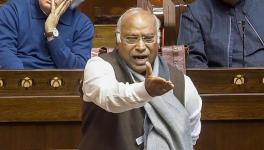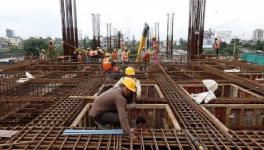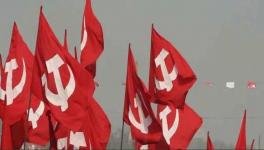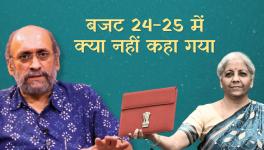A Union Budget For No One
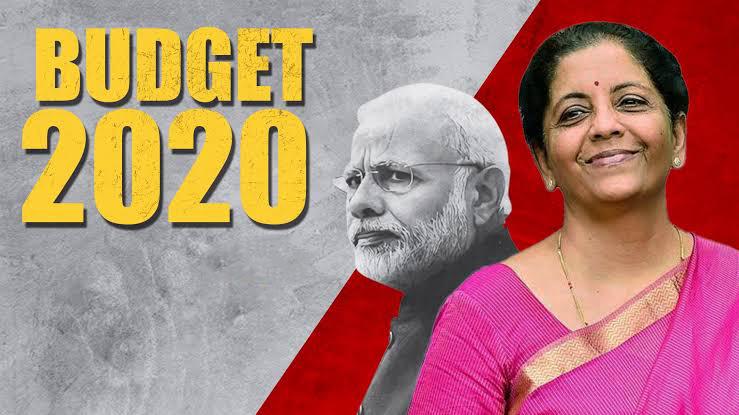
The annual budget of the Union government was placed in Parliament on the February 1, 2020. In the very beginning of her second budget speech, finance minister Nirmala Sitharaman mentioned that “this is the Budget to boost their (people of India) incomes and enhance their purchasing power. Only through higher growth we can achieve that and have our youth gainfully and meaningfully employed.”
First of all, the evidence from other countries around the world shows that higher growth is neither necessary nor sufficient condition for having the youth of the economy gainfully and meaningfully employed.
Second, the current slowdown is happening because of low income and low purchasing power of people in India at aggregative level. Therefore, growth has to be enhanced by increasing incomes and purchasing power of people by providing them gainful and meaningful employment and wage, rather than enhancing purchasing power by fostering growth.
Growth rate cannot be revived without enhancing the purchasing power of people – the causality is reversed. Hence, the underlying macroeconomics is wrong – the finance minister is trying to solve the aggregate demand problem by supply-side economics. The problem of unemployment and unutilised capacity cannot be solved by the economics with full employment or full capacity assumptions.
This Union Budget was being placed in the backdrop of slowdown associated with rise in the rate of unemployment in the country and with absolutely stagnant average real wage rates. Common peoples’ average income is not rising (after adjusting for inflation) for last six-seven years but, the per capita real gross domestic product (GDP) has increased at an annual growth rate of more than 5% during this period.
As a result of this, the income inequality is continuously rising at an alarming rate. This is the root cause of demand depression due to lack of purchasing power of common people, which is causing the ongoing economic slowdown.
Slowdown is not only about lower growth rate but also about lower investment demand due to lack of profit opportunities in almost all the sectors in the economy. This would bring down the growth rate further and bring down the aggregate consumption and investment even further in future and the vicious cycle would continue until and unless something is done.
The fiscal policy instrument is one of the most effective instruments to get rid of this vicious cycle. An expansionary fiscal policy, with larger government expenditures, can solve the problem. But, the finance minister chooses to adhere to the fiscal responsibility and budget management (FRBM) Act and this budget does nothing to enhance the purchasing power of common people by generating larger employment and by enhancing their wage rates in real terms. Fiscal conservatism is a wrong stance to take amidst high unemployment, low wage, increasing poverty and inequality.
Overall Disappointment
Even the direct tax-payee salaried middle-class is also not happy. In the new income tax scheme, after removing exemptions and tax concessions (other than the existing exemption of income up to Rs.5 lakh), despite slightly lower tax rates in multiple tax-slabs, the effective tax rates might actually go up for majority of them excepting the income class of Rs.15 lakh and above.
Businesspersons are also unhappy as the Bombay Stock Exchange (BSE) Sensex fell by more than 1000 points immediately after the Budget. The business class is also realising that one of the lowest profit-tax rate in the world (as mentioned by the finance minister in her Budget speech) is not enough unless the profitable opportunities are created. For example, profit of Rs.100,000 with 30% tax is better than profit of Rs.80,000 with 20% tax because the net profit would come down from Rs.70,000 to Rs.64,000. Therefore, this Budget has made all sections of population unhappy.
On top of that, this Budget proposes a massive disinvestment plan of Rs.2.1 lakh crore, including the privatisation of Life Insurance Corporation of India (LIC). Disinvestment of other public sector units, like the Air India, Bharat Petroleum, the Tehri and North-East hydro-electric projects, COCNOR and so on has already been announced.
Disinvestments are negative capital expenditures. The capital expenditure has been proposed to increase from Rs.3.5 lakh crore in 2019-20 to Rs.4.1 lakh crore in 2020-21 and the disinvestment proceeds have been proposed to increase from Rs.65,000 crore to Rs.2.1 lakh crore. Therefore, the net capital expenditure would reduce from Rs.2.85 lakh crore to Rs.2 lakh crore on the face of a slowdown, when private investment is not taking place at a sufficient rate to absorb the existing labour force.
Revenue Shortfall
As far as the revenue side of the Budget is concerned, the government is expecting a tax-revenue shortfall of Rs.3 lakh crore in the current fiscal year than what was budgeted last year. The revenue loss primarily accrues from the shortfall in corporate profit tax of Rs.1.55 lakh crore. Shortfalls in excise duty and goods and services tax would be more than Rs.50,000 crore each than what was budgeted last year.
Even in customs duty, the shortfall is more than Rs.30,000 crore. Then there is shortfall in income tax of Rs.10,000 crore. These are all revised estimates. However, the trend in revenue receipts from the trends in Controller General of Accounts (CGA) data tells us that the actual revenue shortfall would be at least Rs.1 lakh crore more than what has been shown in the revised estimates of budget. Therefore, this government is failing to raise tax according to its own calculations and expectations.
As a result of lower tax revenue, the states’ share in central taxes is expected to reduce by more than one and half lakh crores, which is reducing the fiscal space of each and every state governments. This is according to the revised estimate for 2019-20, the actual reduction is likely to be more than Rs.2 lakh crore, which is more than 1% of GDP in the current fiscal year. Therefore, not only the centre’s expenditure but also the state governments’ expenditures are likely to come down (given the FRBM restrictions) by more than one percent of GDP this year because of centre’s failure to raise taxes as per the budget expectations.
The Expenditure Squeeze
Finally, in the expenditure side of the Budget, the size of the Union Budget is set at Rs.30.42 lakh crore, which is 13.5% of expected GDP (with 10% nominal growth assumption) for the year 2020-21. In 2018-19, the budgeted expenditure was 12.9% of GDP and the actual expenditure has been less than 12.2% of GDP. In 2019-20, the budgeted expenditure was 13.6% and the revised estimate is 13.2% and the actual expenditure would be even lower as a proportion of GDP (despite lower growth rate of GDP) this year. Therefore, this 13.5% of GDP amount of government expenditure for the next year has to be taken with a pinch of salt.
In this context, it is important to mention that the Union government’s actual expenditures were 14.4% in 2011-12, 13.8% in 2012-13 and 13.6% in 2013-14 before the BJP-led National Democratic Alliance (NDA) government assumed office. Then gradually it was brought down to 12.2% of GDP by 2018-19 (actuals). Therefore, there has been a drastic expenditure cuts during the present Narendra Modi-led NDA regime.
Source: Budget documents of previous years and the Economic Survey 2019-20, Govt. of India.
If we look at department and ministry-wise expenditures and compare the revised estimates with what was budgeted for the current fiscal year (2019-20), we see that there have been huge cuts in all the ministries that have been emphasised in the FM’s budget speech.
The department of agriculture cooperation and farmers’ welfare has faced a cut by 22% (by Rs.28,581 crore), department of food and public distribution has faced an expenditure cut by 40% (by Rs.77,000 crore). The other ministries which have suffered from significant spending cuts include ministry of women and child development (by almost Rs 3,000 crore), ministry of tourism (by Rs.773 crore), ministry of skill development and entrepreneurship (by Rs. 458 crore), ministry of Panchayati Raj (by 43%), ministry of new and renewable energy (by 26% and by Rs.1,363 crore), department of drinking water and sanitation (by Rs.1,656 crore), department of water resources, river development and Ganga rejuvenation (by Rs.727 crore), ministry of housing and urban affairs (by Rs.5,765 crore) and so on and so forth. There is a cut in the central sector schemes by more than Rs.1 lakh crore.
The budget for department of food and public distribution in 2020-21 is 36% less than its current budget. The budget of ministry of steel has become less than half and the ministry of textile budget has been downsized by more than 27%. Even the rural job guarantee scheme -- MGNREGS -- budget has been cut amidst employment crisis. There is hardly any increase in the budget for many departments and ministries.
Clearly, this is not an expansionary budget, which would be able to address the burning problems of increase in unemployment, low wage, poverty and inequality in the country and revive growth. In fact, this is a budget, which has no benefits for anyone.
The writer is assistant professor, Centre for Economic Studies and Planning, Jawaharlal Nehru University, Delhi. The views are personal.
Get the latest reports & analysis with people's perspective on Protests, movements & deep analytical videos, discussions of the current affairs in your Telegram app. Subscribe to NewsClick's Telegram channel & get Real-Time updates on stories, as they get published on our website.












